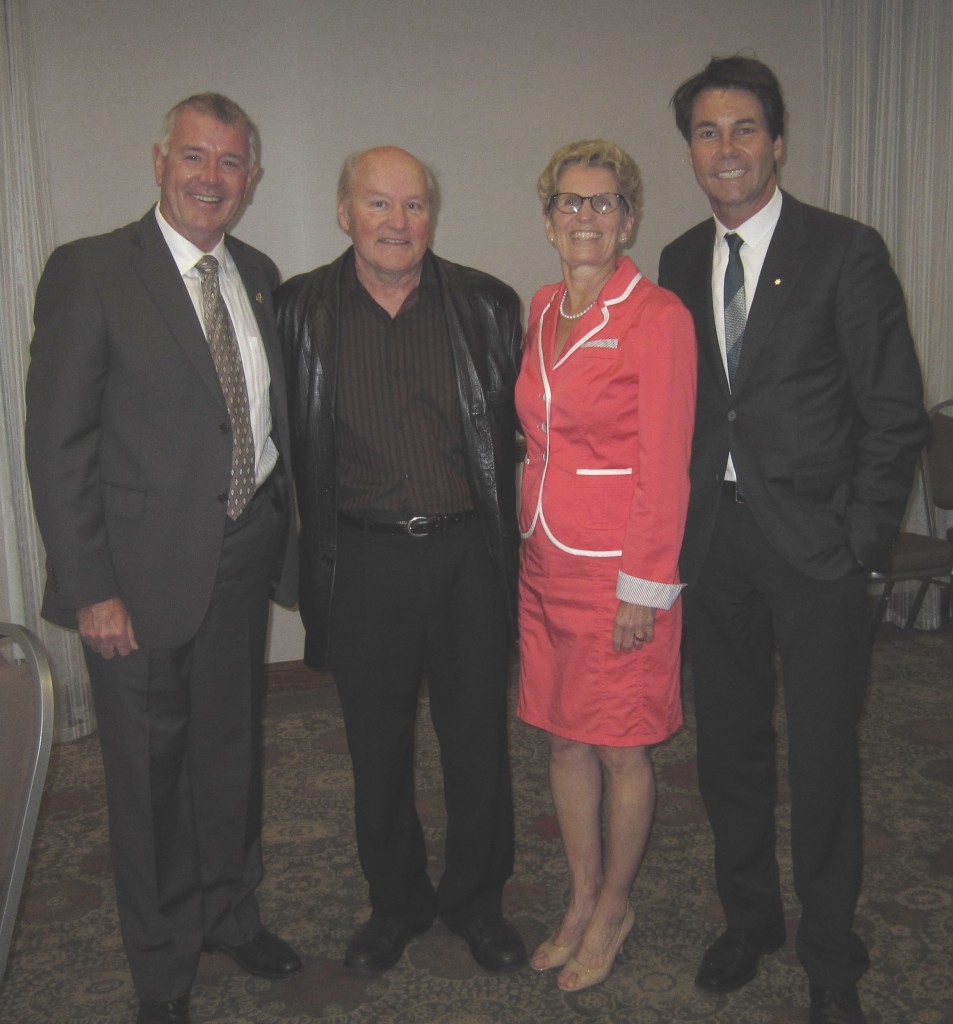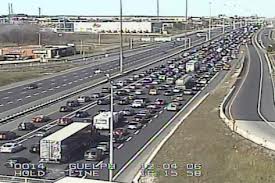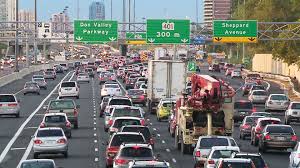By Ray Rivers
BURLINGTON, ON. “Toronto is a great place to live, if only you could manage to get to work” – so says the Toronto Board of Trade. Commute times in the greater Toronto area were the longest of 19 major cities in a recent survey. It takes the average commuter 80 minutes round-trip, a full 24 minutes longer than it would in Los Angeles, the very birthplace of urban sprawl.

Ray Rivers, the Gazette’s political columnist with Premier Kathleen Wynne and MPP Kevin Flynn on the left and Dr. Eric Hoskins on the right – all at the recent Roundtable held in Burlington.
So Ontario’s Premier Wynne has made it a priority for her government to improve the lot of commuters by building transit. “It is a matter of social justice, I want to improve people’s lives by allowing commuters to spend more quality time with family and friends,” she emphasized in an exclusive interview last Friday. Ms. Wynne had earlier test-ridden the new half-hour GO train service, en route to a meeting with the Burlington Chamber of Commerce. Flanked by her Minister of Economic Development, Dr. Eric Hoskins, and the Parliamentary Assistant for Transportation, Kevin Flynn, Kathleen Wynne shared some thoughts on this topic with me.

Premier Wynne believes that this level of traffic eats away at the time people deserve to have with their families and that the time spent in cars is damaging the provincial economy. Is GO the answer – and will we go along with that kind of a solution?
The Premier’s goals are straight forward: invest in people; provide much-needed infrastructure; and improve business opportunities that will result in job creation. But she has her work cut out for her. We know that most of Ontario’s urban areas are poorly configured for efficient public transit. Three generations of urban sprawl have made public transit costly to deliver and inconvenient to ride – so the result is gridlock. And yes, the Greenbelt, introduced by her predecessor, was intended to curb urban sprawl, but the benefits of that initiative will not be seen for another generation – until after all the approved developments in the queue have seen their day.
Back in 1990 former Premier David Peterson, another Liberal, had proposed an ambitious $6.2 billion expansion of public transit for Toronto. Then he lost the next election to the NDP, who cherry-picked elements of that plan. The NDP lost the next election which resulted in a virtual cessation of transit progress under Mike Harris. Even when the Liberals did return to power, progress was slow as the Toronto kept changing its mind between subways and light-rail and subways again – making sustainable funding difficult.
The Province can’t really afford to do much in the way of funding these days. Ontario has been bleeding red ink since the 2008 recession and is now carrying a staggering quarter trillion dollar debt-load on its books. Metrolinx, the organization tasked with creating some order to the provinces transit mess, is saying they need $2 billion a year for needed transit expansion,and they are probably right.
That money is not likely to flow from the business community; having lowered corporate taxes earlier, it is unlikely the province will raise them again. One of Wynne’s priorities is to promote business development, not scare it away with higher taxes. Wynne talked about bringing more jobs out to the suburbs, places like Burlington, so fewer folks need to be on that long daily commute. There are fewer businesses paying taxes these days as we become more reliant on imports.

Is this a better option? Can we rely on the public sector to deliver consistently reliable service that works within the reasonable budgets they are given?
Worse still, if we are to believe one think-tank, the left-leaning Centre for Policy Alternatives, we should expect an even greater decline in our industrial base following conclusion of the planned Canada-EU trade agreement.
Canada’s Economic Action Plan, the Harper government’s economic blueprint, has committed $14 billion for infrastructure renewal. Premier Wynne hosted the Council of the Federation meeting last July and there was unanimous agreement for “continuing the conversation” about infrastructure – which really means they want access to that fund. Ontario, with a third of Canada’s population might reasonably expect about five or six billion dollars of that commitment – enough to make a really good start on adding public transit. And, as if on cue, the federal government has just announced over half a billion dollars for the Scarborough subway extension.
Aside from the auto companies Mr. Harper hasn’t shown much interest in helping Canada’s industrial heartland move forward. In fact, there hasn’t been a PM in recent memory with so much interest in selling off the nation’s natural resources and so little interest in protecting home-grown manufacturing and services. Ontario was once the mighty province that led the nation in economic prosperity, yet today it has slipped to the status of a ‘have-not’ province. It would be such a shame if the province ended up becoming another rust belt jurisdiction like Michigan or Ohio, and Toronto another bankrupt city like Detroit.
 Ray Rivers, born in Ontario earned an economics degree at the University of Western Ontario and a Master’s degree in economics at the University of Ottawa. His 25 year stint with the federal government included time with Environment, Fisheries and Oceans, Agriculture and the Post office. Rivers is active in his community; has run for municipal and provincial office and held executive positions with Liberal Party riding associations. He developed the current policy process for the Ontario Liberal Party.
Ray Rivers, born in Ontario earned an economics degree at the University of Western Ontario and a Master’s degree in economics at the University of Ottawa. His 25 year stint with the federal government included time with Environment, Fisheries and Oceans, Agriculture and the Post office. Rivers is active in his community; has run for municipal and provincial office and held executive positions with Liberal Party riding associations. He developed the current policy process for the Ontario Liberal Party.























“Aside from the auto companies Mr. Harper hasn’t shown much interest in helping Canada’s industrial heartland move forward. In fact, there hasn’t been a PM in recent memory with so much interest in selling off the nation’s natural resources and so little interest in protecting home-grown manufacturing and services. Ontario was once the mighty province that led the nation in economic prosperity, yet today it has slipped to the status of a ‘have-not’ province.”
We can be thankful that we had 9 great years of Mr. McGuinty preventing Ontario from sliding down the into the economic abyss.
A Harper’s article in 1975 referred to Toronto as “The City that works”. Oh, how times have changed.
Toronto’s urban planners are bereft of any integrity, as shown by its wall of towering lake-front condos and its civic politicians, who, if not smoking cocaine, will dither interminably over political philosophies. The simple Dufferin Street Bridge that spans the 4-lane Gardener expressway will take almost as long to replace as it took to construct the 13 km Confederation Bridge that connects New Brunswick and PEI. Ontario may not have been able to prevent becoming a “have-not” province, but Toronto chose to become a “will-not” city.
The problem with transit in Toronto lies at the feet of Torontonians, who, like Mrs. Marcos and her shoes, want one of every fancy set of transit vehicles ever invented but are too cheap to pay for their own service. There is no good reason for the taxpayers of Gander, Tuktoyaktuk or Squamish to be paying for Toronto’s subway.
The name “Toronto” is from the Mohawk language, meaning “where there are trees standing in the water”. Toronto’s transit commuters will be standing up to their necks in water, snow and debt before the city ever re-dedicates itself to be the “city that works.”